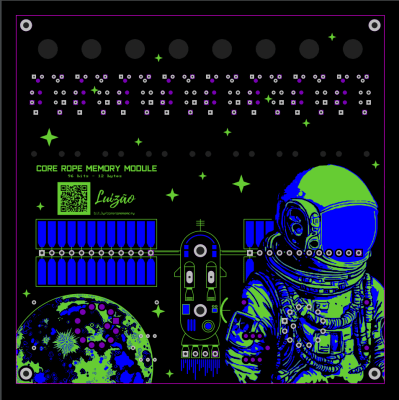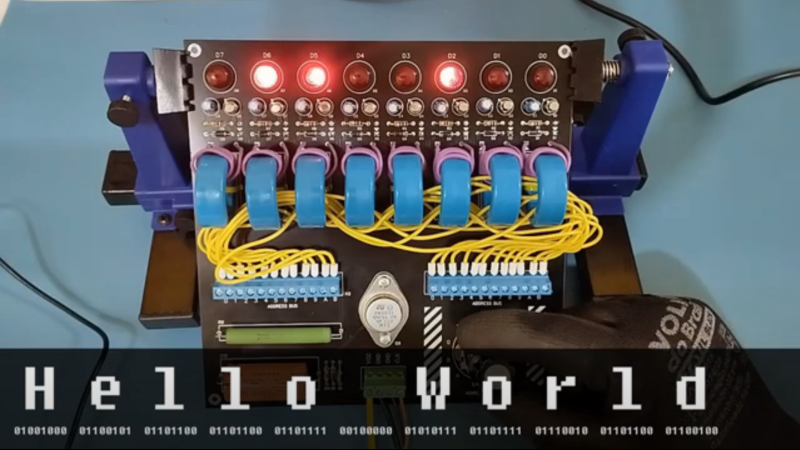[Luizão] wanted to create some hardware to honour the memory of the technology used to put man on the moon and chose the literal core of the project, that of the hardware used to store the software that provided the guidance. We’re talking about the magnetic core rope memory used in the Colossus and Luminary guidance computers. [Luizão] didn’t go totally all out and make a direct copy but instead produced a scaled-down but supersized demo board with just eight cores, each with twelve addressable lines, producing a memory with 96 bits.
The components chosen are all big honking through-hole parts, reminiscent of those available at the time, nicely laid out in an educational context. You could easily show someone how to re-code the memory with only a screwdriver to hand; no microscope is required for this memory. The board was designed in EasyEDA, and is about as simple as possible. Being an AC system, this operates in a continuous wave fashion rather than a pulsed operation mode, as a practical memory would. A clock input drives a large buffer transistor, which pushes current through one of the address wires via a 12-way rotary switch. The cores then act as transformers. If the address wire passes through the core, the signal is passed to the secondary coil, which feeds a simple rectifying amplifier and lights the corresponding LED. Eight such circuits operate in parallel, one per bit. Extending this would be easy.
Obviously, we’ve covered the Apollo program a fair bit. Here’s a fun tale about recovering the guidance software from the real hardware. Like always, the various space programs create new technologies that we mere mortals get to use, such as an auto-dialling telephone.
(video in Brazilian Portuguese)
















Yeah! Thank you for publishing my project :)
Cara, esta coisa é incrível! Sou Americano, mas eu morei no RS pra estudar lá por um semestre. Se tu quiser… Talvez posso tentar pra traduzir os seus vídeos pra inglês. O meu português não é perfeito, mas… Posso tentar pra te ajudar, tchê!! Obrigado pra os seus contribuições de educação, a história do mundo e a comunidade de Open Source tecnología.
Olá Patrick!
Obrigado, tchê! :-)
Bem, se você quiser, sinta-se livre para traduzir os vídeos. Compartilhar conhecimento é sempre bom. Obrigado pelo contato. Um abraço!
Uh in my day it was 1 bit of storage per core. Here there are 8 cores…
Core inflation has been high in recent years…
True for read-write memory, but the keyword here is “ROM”. The routing of the “address” lines are the coding of the “memory”, not the cores themselves.
It’s ROM, so it’s storing data by passing a wire either through or around a core. The cores only read whether or not the selected wire is running though them. Changing the data requires re-routing the wires.
core memory is only one bit per core. but in this case the core doesnt actually store a bit. its all about where each yellow wire goes. if the wire goes through a core its a one, otherwise its a zero. then you just power each wire in sequence to extract each byte via the purple wires. in theory you can store as many bytes as you want so long as you still have room to get the wires through the cores. you can think of the yellows as an address bus, except its not binary, you can only power one at a time.
What I tell you three times is true, he said while Snark hunting.
But will it play DOOM?
I’ll see myself out ———->
Have you already played DOOM on a 555?
It can keep you busy for weeks.
Get enough rope memory and it can absolutely play doom.
This is beautiful. Seems a great way to build it yourself to see how it works. Great project.
Thank you craig! :-)
Colossus and Luminary are the names of the software, not the computer. The Apollo Guidance Computer was used in both the Command Module and Lunar Module. The LM AGC ran the Luminary software, and the CM AGC ran Colossus.